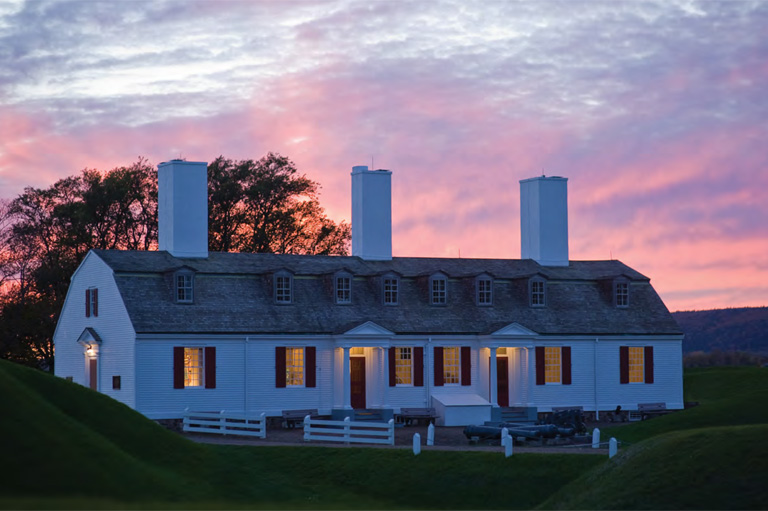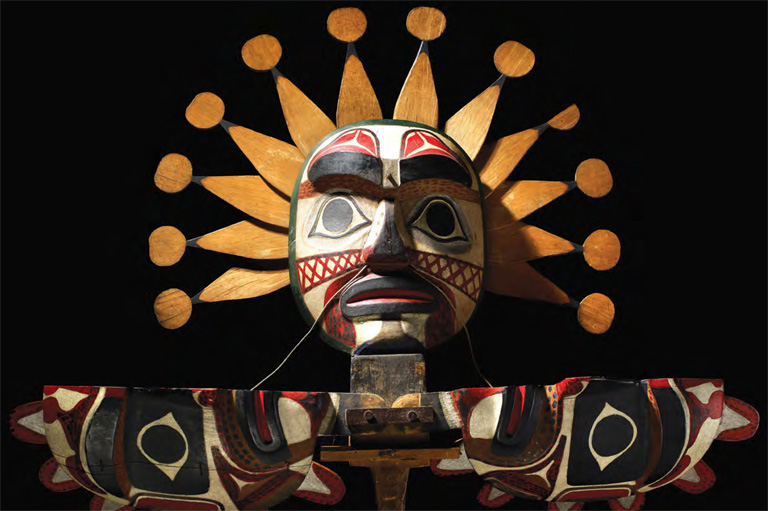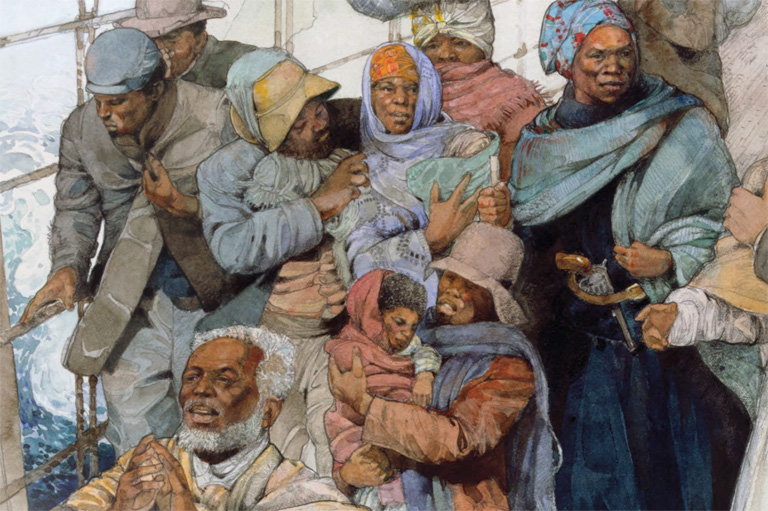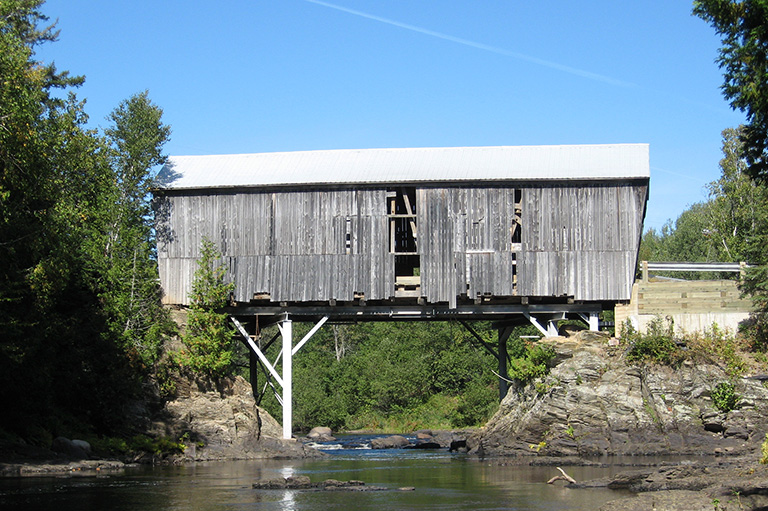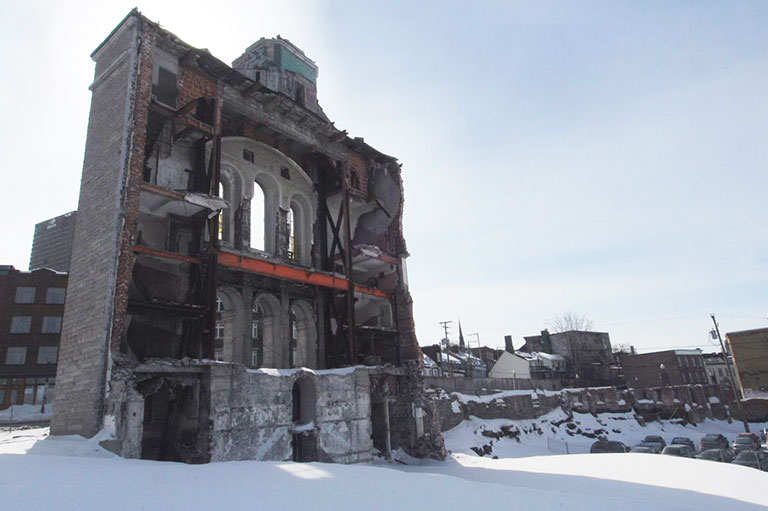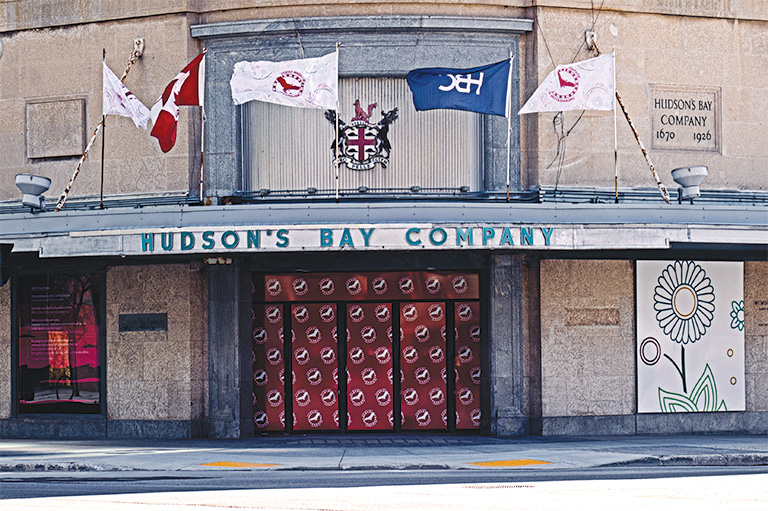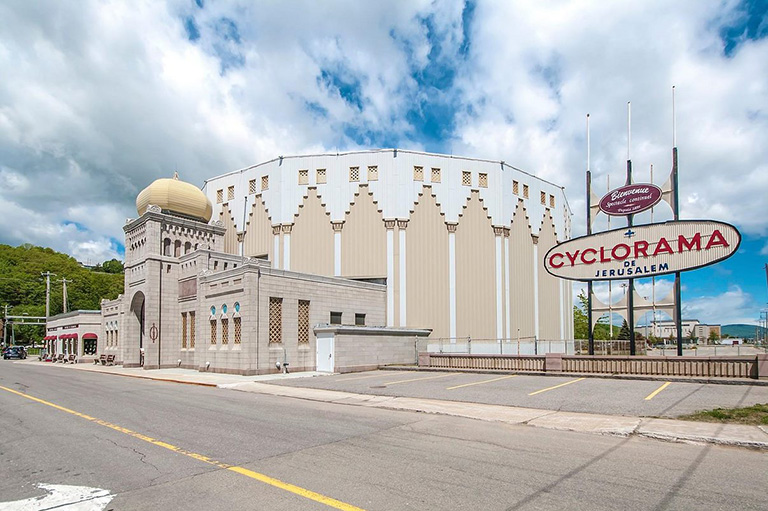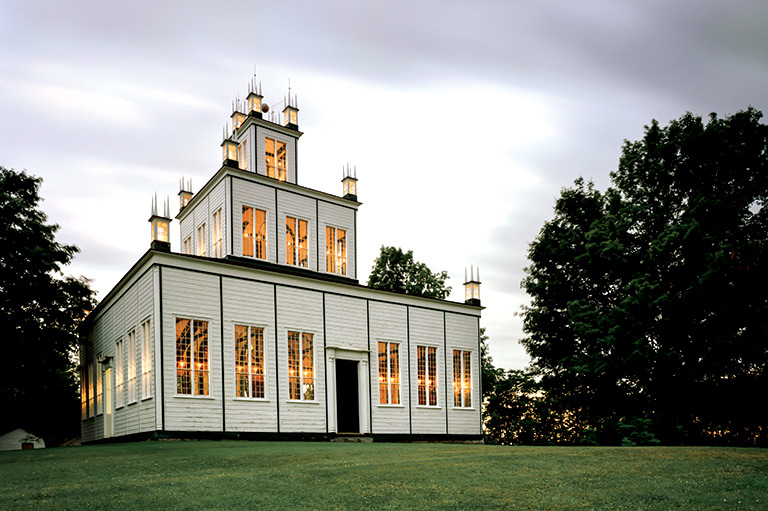From Chert to Chateaux
Buried beneath present-day Quebec City lie the ruins of palaces and fortresses where colonial governors ruled for more than two hundred years.
Hidden for over a century, the ruins of the Saint-Louis Forts and Châteaux are now open to visitors after excavations by archaeologists revealed the remnants of buildings dating back to 1620 scattered with hundreds of thousands of historical artifacts.
Article follows below...
-
 With the Château Frontenac boardwalk removed, the remnants of buildings dating to the early 1600s are revealed at the Saint-Louis Forts and Châteaux National Historic Site.Parks Canada
With the Château Frontenac boardwalk removed, the remnants of buildings dating to the early 1600s are revealed at the Saint-Louis Forts and Châteaux National Historic Site.Parks Canada -
 Visitors peer through a glass viewing area.Parks Canada
Visitors peer through a glass viewing area.Parks Canada -
 Visitors examine artifacts recovered from the excavations at Saint-Louis Forts and Châteaux.Parks Canada
Visitors examine artifacts recovered from the excavations at Saint-Louis Forts and Châteaux.Parks Canada -
 An aerial view of Torngat Mountains National Park, where archaeologists have discovered examples of chert, used by Indigenous peoples for thousands of years to make tools.Parks Canada
An aerial view of Torngat Mountains National Park, where archaeologists have discovered examples of chert, used by Indigenous peoples for thousands of years to make tools.Parks Canada -
 A caribou stands at Torngat Mountains National Park, home to kitjigattalik, the Ramah Chert Quarries National Historic Site.Parks Canada
A caribou stands at Torngat Mountains National Park, home to kitjigattalik, the Ramah Chert Quarries National Historic Site.Parks Canada -
 An aerial view of Prince of Wales Fort National Historic Site near Churchill, Manitoba.Parks Canada
An aerial view of Prince of Wales Fort National Historic Site near Churchill, Manitoba.Parks Canada -
 An archaeologist searches for artifacts at Prince of Wales Fort.Parks Canada
An archaeologist searches for artifacts at Prince of Wales Fort.Parks Canada -
 A fragment of a Pouhon Spa mineral water bottle from Belgium, found during excavations at Prince of Wales Fort.Parks Canada
A fragment of a Pouhon Spa mineral water bottle from Belgium, found during excavations at Prince of Wales Fort.Parks Canada
Their fascinating findings included the ruins of the home of Quebec City founder Samuel de Champlain; wine bottles engraved with the personal insignia of New France Governor Marquis de Beauharnois; pipes and trading beads showing the presence of Indigenous people inside the fort; and a collection of cannonballs launched by the British during the siege of Quebec in 1759.
“It really is an extraordinarily rich site,” said archaeologist Pierre Cloutier. “We have elements of the presence of each successive occupant. We have, sometimes, thousands of objects that tell us about a given period.”
With guided tours and multimedia interpretation, the Saint-Louis Forts and Châteaux is one of the most prominent archaeological excavations in Canada’s network of National Historic Sites. But other sites across the country have their own importance.
Archaeologists are called in to make sure that historically important artifacts are not destroyed during repairs to historic sites. This was the case with the Saint-Louis Forts and Châteaux, where work was undertaken between 2005 and 2010 to stabilize the terrace that had been built overtop of the ruins in the nineteenth century.
Similarly, archaeologists have been excavating at Prince of Wales Fort near Churchill, Manitoba, since 1999 in conjunction with work to stabilize the fort’s collapsing outer walls.
Excavations of the early eighteenth-century fur-trading fort have provided insights into the everyday life of the officers, tradesmen, labourers and Indigenous people who traded at the fort.
For example, “a large number of bones from the upper left wing of geese were uncovered,” said Parks Canada archaeologist Donalee Deck. In fact, historical sleuthing revealed that the fort’s inhabitants were making quill pens from the feathers of the goose’s upper wings — specifically the left wings, where the feathers were thought to have a better curvature for right-handed people.
“The French confiscated over 17,000 goose quills when they captured the fort in 1782,” Deck said. “Every artifact has a really interesting story.”
In some cases, archaeologists can help to establish the exact location, extent, and importance of a site that is being considered for national historic designation. That was the case with kitjigattalik, the Ramah Chert Quarries National Historic Site, in Torngat Mountains National Park, Newfoundland and Labrador.
A forty-kilometre-long rock outcropping in the park is the only known source of a unique, translucent form of chert that Indigenous Peoples used for thousands of years to make stone tools.
Those tools have been found as far south as Maryland and as far west as Ontario, proving that they were widely traded in North America prior to European contact.
But before Parks Canada archaeologists and Inuit partners undertook fieldwork in 2009, the exact locations of the quarries and tool-making sites were not well documented.
“For this project, our goal was documentation: locating, photographing, and describing the sites,” said archaeologist Jenneth Curtis. “We found thousands of pieces: large blades, small blades, partially finished arrowheads, and other kinds of stones that were used as hammer stones.”
Displaying archaeological findings to the public is not always straightforward. At Prince of Wales Fort, the exhibits at the visitor centre in Churchill will soon be updated, giving people a glimpse of life in the fur-trading outpost three hundred years ago.
But at kitjigattalik, the decision was made for the 2009 field project not to remove artifacts from the chert quarries and tool-making sites. Parks Canada is struggling with the question of whether to put up interpretive signage, which would make the sites more visible but would possibly expose them to looting by treasure hunters.
“We need to talk about how we’re going to balance interpretation, a chance for people to see it, with protecting it,” Curtis said.
Themes associated with this article
Advertisement
You might also like...
Help support history teachers across Canada!
By donating your unused Aeroplan points to Canada’s History Society, you help us provide teachers with crucial resources by offsetting the cost of running our education and awards programs.

